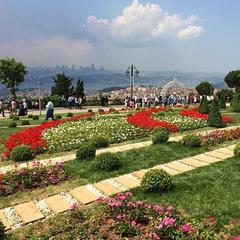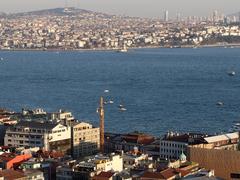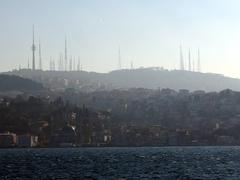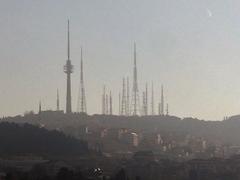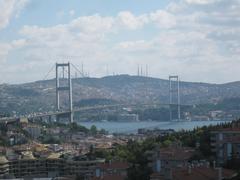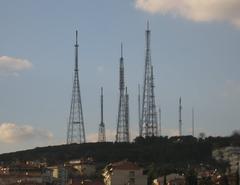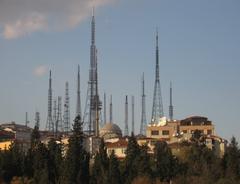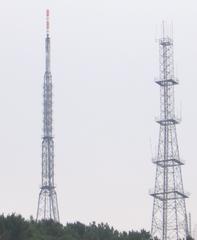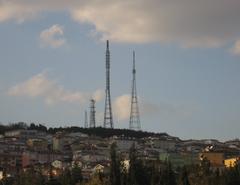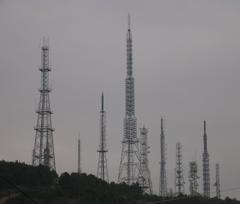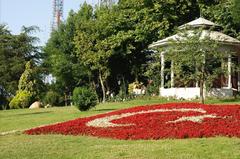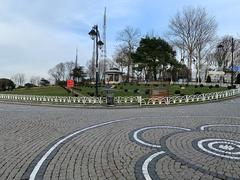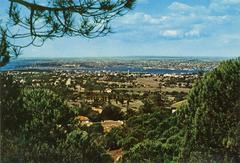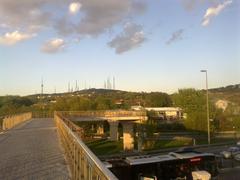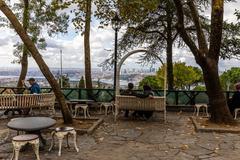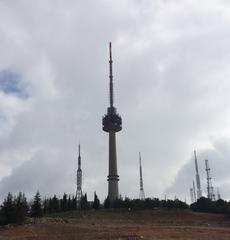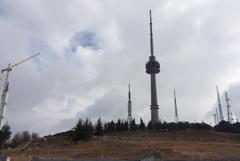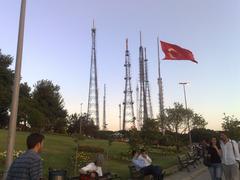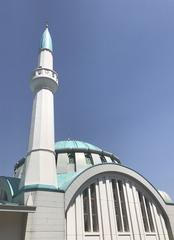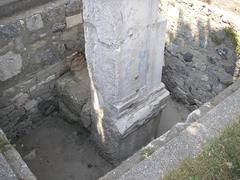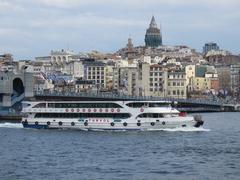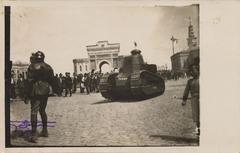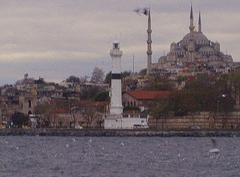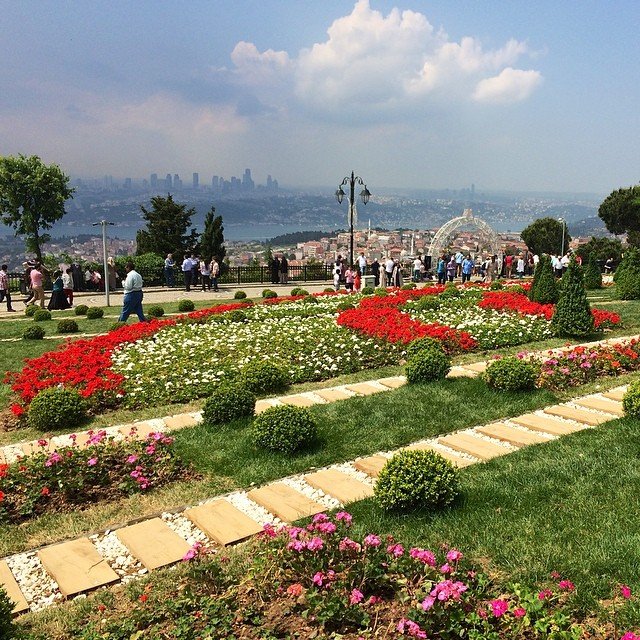
Visiting Çamlıca Tunnel in Istanbul: Hours, Tickets, and Tips
Date: 18/07/2024
Introduction
The Çamlıca Tunnel, officially known as the Eurasia Tunnel, is a modern engineering marvel that plays a crucial role in Istanbul’s transportation network. Opened in December 2016, this tunnel has significantly improved connectivity between the European and Asian sides of the city, reducing traffic congestion and travel time. This guide will explore the history, significance, and practical information for visitors to the Çamlıca Tunnel, providing a comprehensive overview of what makes this structure a vital part of Istanbul’s infrastructure.
Istanbul, a city that straddles two continents, has historically faced challenges in connecting its European and Asian sides. The Bosphorus Strait, while beautiful, has been a significant barrier, leading to severe traffic congestion, especially with the city’s growing population and vehicle ownership. Early solutions like the Bosphorus bridges and ferries proved inadequate, prompting the need for a more efficient connection. The idea for a tunnel beneath the Bosphorus Strait dates back to the 19th century but only became feasible in the early 2000s with advancements in engineering and political commitment (source).
The construction of the Çamlıca Tunnel involved overcoming significant geological and logistical challenges. Utilizing state-of-the-art tunnel boring machines (TBMs) and advanced seismic reinforcement techniques, engineers were able to successfully complete the project despite the seismically active region. The tunnel reaches a depth of 106 meters below sea level, making it a testament to modern engineering prowess (source).
Since its inauguration, the Çamlıca Tunnel has had a profound impact on Istanbul. Beyond reducing travel time and congestion, it has spurred economic activity, created jobs, and acted as a catalyst for urban transformation in the surrounding areas. It stands as a symbol of Istanbul’s progress and ambition, showcasing the city’s ability to embrace innovation and overcome challenges (source).
Table of Contents
- Introduction
- Historical Background and Significance
- Visitor Information
- Engineering and Design Features
- FAQ
- Conclusion
Historical Background and Significance
Early Challenges and the Need for a Solution
Istanbul, strategically positioned at the crossroads of Europe and Asia, has always faced traffic congestion. The Bosphorus Strait, while a picturesque natural divide, posed a significant challenge for transportation between the city’s Asian and European sides. By the early 21st century, with a burgeoning population and increasing vehicle ownership, traffic congestion had reached a critical point, impacting daily life and economic activity.
The existing solutions, primarily the two Bosphorus bridges, proved insufficient to handle the ever-increasing traffic flow. Ferries, while a traditional mode of transport, were time-consuming and susceptible to weather disruptions. A new, innovative solution was needed to alleviate the strain on Istanbul’s infrastructure and provide a faster, more reliable connection between the two continents.
The Genesis of the Çamlıca Tunnel Project
The idea for a tunnel traversing beneath the Bosphorus Strait was not new. It had been proposed as early as the 19th century during the Ottoman era. However, the technological limitations and financial constraints of the time prevented its realization.
It was in the early 2000s that the Turkish government, recognizing the urgency of Istanbul’s traffic woes, revisited the idea of a Bosphorus tunnel. This time, advancements in engineering and construction technology, coupled with a strong political will, made the project feasible.
Construction and Inauguration
The Çamlıca Tunnel project was conceived as part of a larger transportation master plan for Istanbul, aiming to improve connectivity and reduce traffic congestion. The tunnel, officially known as the Eurasia Tunnel, was designed as a double-deck tunnel, with each deck carrying two lanes of traffic.
Construction began in 2011, marking a significant milestone in Istanbul’s infrastructure development. The project involved overcoming numerous engineering challenges, including excavating beneath the Bosphorus Strait, a seismically active zone. The tunnel’s construction utilized the latest tunnel boring machines (TBMs) and advanced seismic reinforcement techniques.
After five years of intensive construction, the Çamlıca Tunnel was inaugurated on December 20, 2016, by Turkish President Recep Tayyip Erdoğan. The opening ceremony was a momentous occasion, signifying a triumph of engineering and a commitment to modernizing Istanbul’s infrastructure.
Impact and Significance
The Çamlıca Tunnel has had a profound impact on Istanbul since its opening. It has significantly reduced travel time between the Asian and European sides, with the journey now taking a mere 5 minutes compared to the previous 1.5 to 2 hours during peak hours. This time saving has translated into increased productivity, reduced fuel consumption, and a decrease in carbon emissions.
Beyond its practical benefits, the Çamlıca Tunnel stands as a symbol of Istanbul’s progress and ambition. It represents the city’s ability to embrace innovation and overcome challenges, solidifying its position as a global metropolis. The tunnel’s construction has also spurred economic activity, creating jobs and boosting the local construction industry.
A Testament to Engineering Prowess
The Çamlıca Tunnel is not just a transportation route; it’s a marvel of modern engineering. Its construction involved overcoming significant geological and logistical challenges. The tunnel’s depth, reaching 106 meters below sea level at its deepest point, required innovative engineering solutions to withstand the immense pressure and potential seismic activity.
The use of state-of-the-art TBMs allowed for efficient excavation, while advanced waterproofing and seismic isolation techniques ensured the tunnel’s structural integrity. The Çamlıca Tunnel stands as a testament to human ingenuity and the ability to push the boundaries of engineering excellence.
A Catalyst for Urban Transformation
The Çamlıca Tunnel’s impact extends beyond transportation, acting as a catalyst for urban transformation. The areas surrounding the tunnel’s entrances have witnessed significant development, with new residential and commercial projects emerging. This revitalization has breathed new life into these neighborhoods, enhancing their livability and economic prospects.
The tunnel’s presence has also facilitated the growth of tourism. Its efficient connection between the two continents allows visitors to explore Istanbul’s diverse attractions with ease, further boosting the city’s tourism industry.
A Legacy for Future Generations
The Çamlıca Tunnel is more than just a transportation solution; it’s a legacy project that will benefit generations to come. Its efficient design and robust construction ensure its longevity, providing a vital link between the two continents for years to come.
The tunnel’s construction has also fostered a culture of innovation and ambition within Turkey’s engineering and construction sectors. It serves as an inspiration for future mega-projects, demonstrating the country’s capability to undertake and successfully complete complex infrastructure endeavors.
Visitor Information
Ticket Prices and Opening Hours
Visitors can travel through the Çamlıca Tunnel at any time as it operates 24/7. There are no specific ticket prices for the tunnel itself as it is primarily a transportation route for vehicles. Toll fees apply, and they vary depending on the type of vehicle.
Travel Tips and Accessibility
The tunnel is accessible to all types of motor vehicles, including cars, motorcycles, and trucks. However, pedestrians and cyclists are not permitted. Ensure your vehicle is in good condition and follow the posted speed limits for a safe journey.
Nearby Attractions and Photographic Spots
While the Çamlıca Tunnel itself is not a traditional tourist destination, several exciting attractions are nearby. Visit the Çamlıca Hill for panoramic views of Istanbul, or explore the vibrant Üsküdar district with its historical sites and bustling marketplaces.
Engineering and Design Features
Phase 1 - A Triumph of Tunnel Boring
The first phase of the Çamlıca Tunnel, opened to the public on December 20, 2016, involved the construction of twin tunnels, each stretching 3.8 kilometers (2.4 miles) long. These tunnels, designed for vehicular traffic, were a remarkable feat of engineering, excavated using the New Austrian Tunneling Method (NATM) and Tunnel Boring Machines (TBMs).
The NATM, known for its flexibility and adaptability to varying ground conditions, was crucial in navigating the challenging geological formations beneath Istanbul. This method allowed engineers to adjust the tunnel support system as excavation progressed, ensuring stability throughout the process.
Complementing the NATM, TBMs played a pivotal role in expediting the excavation process. These massive machines, equipped with rotating cutter heads, bored through the earth, removing excavated material as they advanced. The use of TBMs significantly reduced the construction time and minimized disruption to the surrounding environment.
Phase 2 - Connecting Continents with a Submerged Tube Tunnel
The second phase of the Çamlıca Tunnel project, inaugurated on February 20, 2022, introduced a groundbreaking addition to Istanbul’s transportation network - a 1.4-kilometer (0.9-mile) submerged tube tunnel. This engineering marvel, the first of its kind in Turkey, traverses the seabed of the Bosphorus Strait, connecting the Asian and European sides of the city.
Constructing a submerged tube tunnel presented unique challenges, demanding innovative engineering solutions. The tunnel segments were prefabricated off-site and then transported by sea to the designated location. These massive concrete sections were then carefully lowered and connected underwater, forming a watertight barrier against the Bosphorus’s currents.
Safety and Accessibility
Beyond its impressive scale, the Çamlıca Tunnel prioritizes safety and functionality. The tunnel incorporates a comprehensive array of safety features, including:
- Emergency Lay-bys: Strategically positioned throughout the tunnel, these lay-bys provide safe havens for vehicles experiencing breakdowns or emergencies.
- Ventilation System: A sophisticated ventilation system ensures a constant flow of fresh air within the tunnel, maintaining air quality and mitigating the risk of carbon monoxide buildup.
- Fire Suppression System: In the event of a fire, a state-of-the-art fire suppression system is in place to quickly detect and extinguish flames, ensuring the safety of motorists.
- 24/7 Monitoring: A dedicated control center monitors the tunnel around the clock, utilizing CCTV cameras and sensors to detect any anomalies and respond promptly to incidents.
Aesthetic Design - Blending Functionality with Beauty
While functionality remains paramount, the Çamlıca Tunnel project doesn’t neglect aesthetics. The tunnel entrances and exits are thoughtfully designed, incorporating architectural elements that harmonize with the surrounding urban landscape.
Inside the tunnel, a well-lit and spacious environment greets motorists. The tunnel walls feature decorative tiles and murals, adding a touch of artistry to the otherwise utilitarian space. These aesthetic considerations contribute to a more pleasant and less monotonous driving experience.
Environmental Considerations - Minimizing Impact
The Çamlıca Tunnel project reflects a commitment to minimizing environmental impact. During construction, measures were implemented to control dust and noise pollution, minimizing disruption to nearby residents.
The tunnel’s design also incorporates features that promote sustainability. The ventilation system utilizes energy-efficient fans, and the tunnel lighting system incorporates LED lights, reducing energy consumption.
FAQ
How long does it take to travel through the Çamlıca Tunnel? The journey through the tunnel typically takes about 5 minutes, significantly reducing travel time between the Asian and European sides of Istanbul.
Are there guided tours available for the Çamlıca Tunnel? Currently, there are no guided tours specifically for the Çamlıca Tunnel as it is a functional transportation route.
What are the operating hours of the Çamlıca Tunnel? The Çamlıca Tunnel operates 24/7, providing a constant and reliable connection between Istanbul’s two continents.
Conclusion
In conclusion, the Çamlıca Tunnel is more than just a transportation route; it is a symbol of Istanbul’s resilience, innovation, and forward-thinking approach to infrastructure development. This modern marvel has significantly reduced travel time between the European and Asian sides of the city, enhancing productivity and reducing environmental impact. The tunnel’s construction has also fostered economic growth and urban transformation, making it a vital part of Istanbul’s future.
For visitors, the Çamlıca Tunnel offers a unique opportunity to experience one of the city’s most significant engineering feats. While primarily a transportation route, its proximity to several notable attractions, such as Çamlıca Hill and Çamlıca Mosque, makes it a convenient point of interest for tourists. The tunnel’s advanced safety features and aesthetic design further add to its allure, making it not just a functional structure but also a visually appealing one (source).
As Istanbul continues to grow and evolve, the Çamlıca Tunnel will remain a critical component of its transportation network, benefiting generations to come. Whether you are a resident or a visitor, understanding the history and significance of this modern marvel adds depth to your appreciation of Istanbul’s rich and diverse landscape (source).
References
- Exploring the Çamlıca Tunnel - History, Significance, and Visitor Information, 2023, Unknown Author (source)
- Exploring the Engineering Marvel of the Çamlıca Tunnel - Visiting Hours, Tickets, and More, 2023, Unknown Author (source)
- Discover Çamlıca Tunnel - Visiting Hours, Nearby Attractions, and Travel Tips, 2023, Unknown Author (source)
